The tribal Jallianwala massacre in Mangarh :
Following the Mangarh Massacre of 1913, Govind Guru, the social reformer and spiritual guide of Bhils, initiated the demand for a separate state for the tribal people. The massacre that took place six years prior to the Jallianwala Bagh tragedy is sometimes called the “Tribal Jallianwala.”
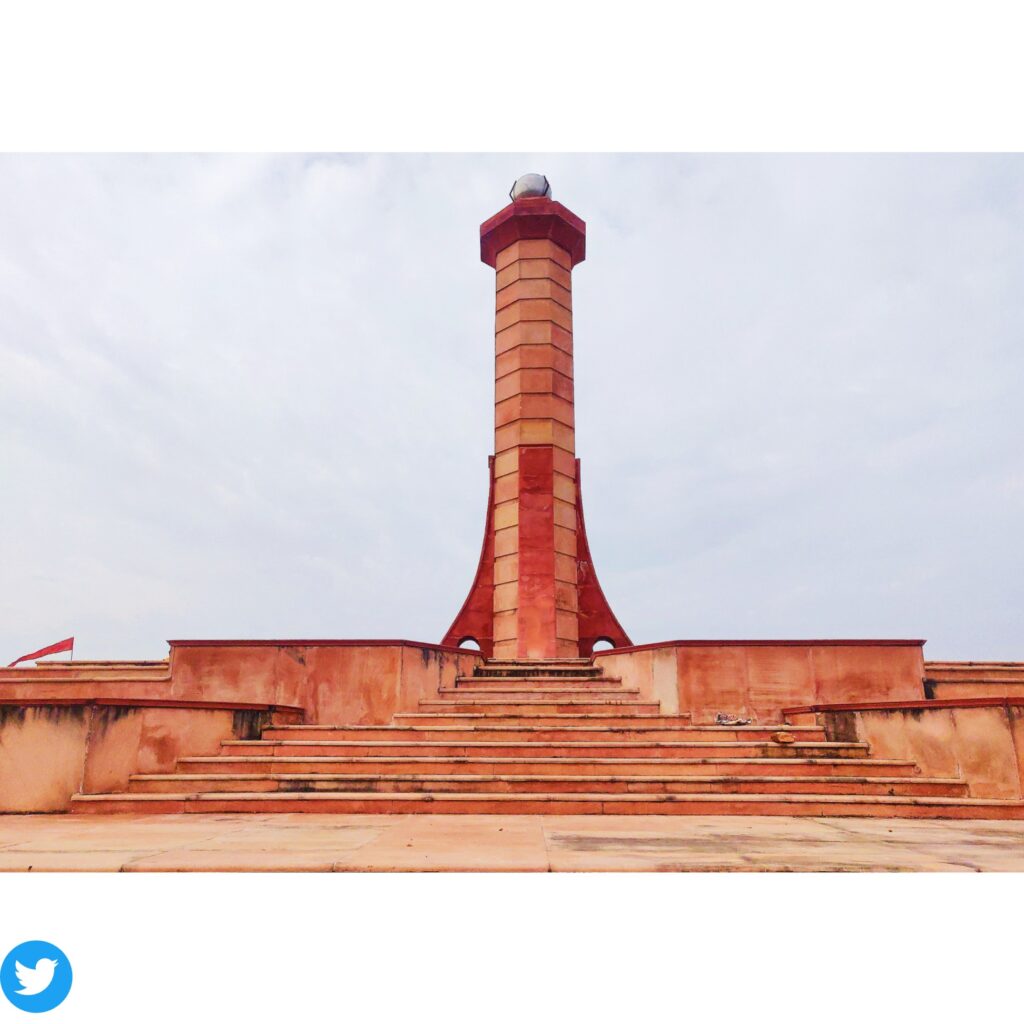
At Mangarh, on the border between Rajasthan and Gujarat, British forces massacred hundreds of Bhil tribal people on November 17, 1913.
The 1913 Sacrifice of 1500 Bhils :
The Mangarh Massacre, which took place on November 17, 1913, nearly six years before the Jallianwala Bagh Massacre in Amritsar, appears to have been forgotten by the Indian people. Theresa May, the prime minister of the United Kingdom, apologized for the Jallianwala Bagh killing, but she said nothing at all for the equally horrific killing of 1500 Bhils at Mangarh.
Under the direction of Govind Guru, thousands of Bhil tribal people assembled at Mangarh Dham Hill on November 17, 1913. The British officers killed thousands of indigenous people to demonstrate their savagery.
Bhil Pradesh: A New Bhil State
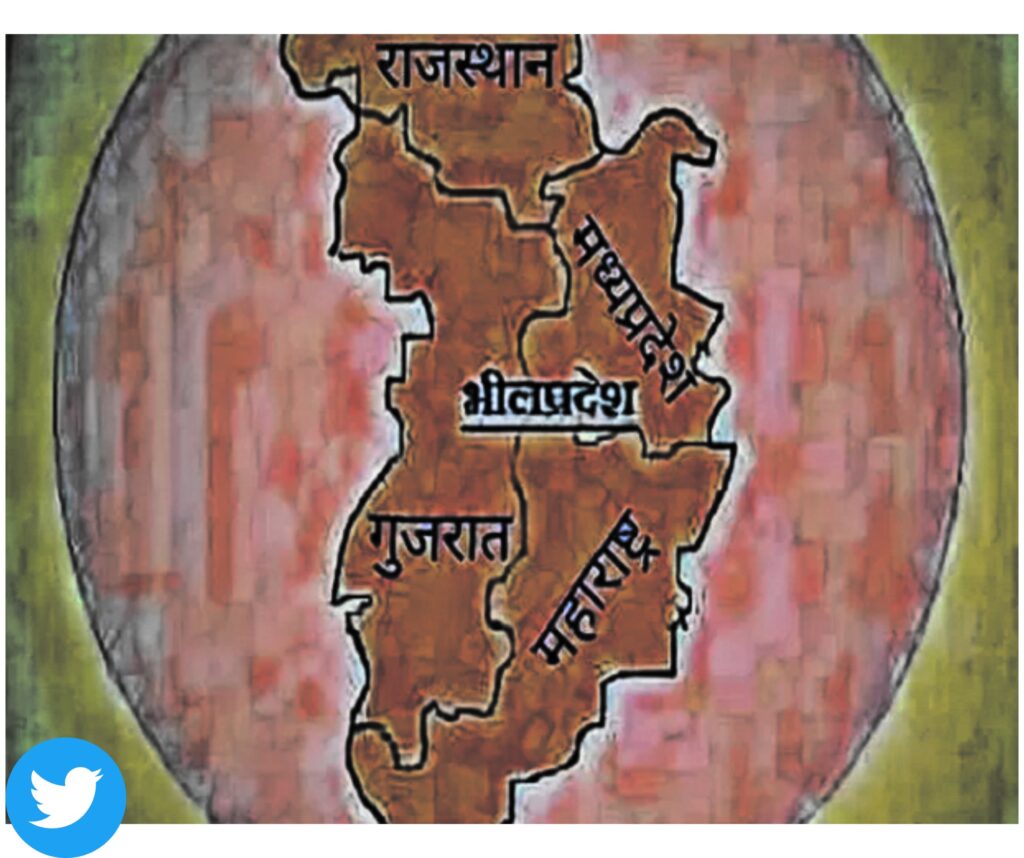
The Indian tribal population has requested the division of four states into a new entity they name “Bhil Pradesh.” Regarding this issue, a delegation will meet with the President and the Prime Minister. 49 districts from Gujarat, Madhya Pradesh, Rajasthan, and Maharashtra will be a part of this proposed state.
New Bhil Pradesh’s proposed districts are as follows:
The following are in Madhya Pradesh: Dhar, Dewas, Khandwa, Khargone, Burhanpur, Barwani, and Alirajpur; Guna, Shivpuri, Mandsaur, Neemuch, Ratlam, and Dhar.
The following are in Rajasthan: Jhalawar, Udaipur, Banswara, Dungarpur, Barmer, Jalore, Sirohi, Chittorgarh, Kota, Baran, Pali.
The following are in Gujarat: Tapi, Navsari, Aravalli, Mahisagar, Dahod, Panchmahal, Surat, Vadodara, Narmada, Sabarkantha, Banaskantha, Bharuch, Valsad.
The following are in Maharashtra: Nandurbar, Dhule, Palghar, Jalgaon, Thane, and Nashik.
There have been several calls for Rajasthan to become its own state. It’s referred to as Bhil Pradesh at times, while Maru Pradesh is being discussed at other times. A sizable demonstration calling for the establishment of a distinct Bhil Pradesh was staged on Thursday at the historic Mangarh Dham location in the Banswara district of Rajasthan. Millions of people participated in this massive demonstration, which was organized by the Bharatiya Adivasi Party (BAP).
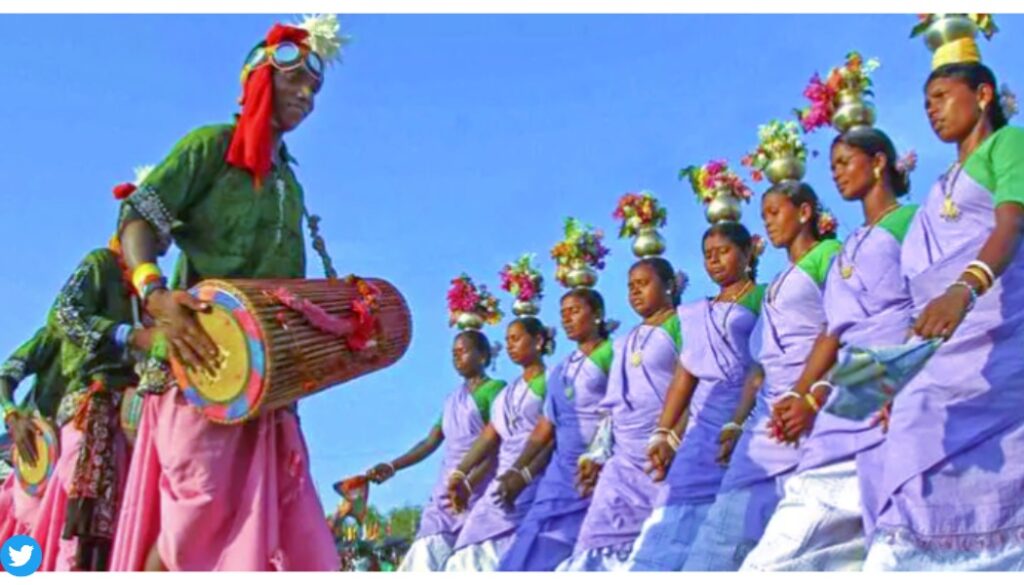
Additionally, Banswara MP Rajkumar Roat posted a video on social media pleading with as many people to come to the event. This demonstration, organized under the BAP banner, campaigned for the creation of Bhil Pradesh, a distinct state for the tribal population. The Bhil Pradesh Cultural Convention was the name of the demonstration.
The BAP is playing a major role in the movement, which is gaining steam. Rajkumar Roat, the BAP MP from Banswara, highlighted the long-standing desire for Bhil Pradesh and said that following the demonstration, he will formally propose the proposal to the Prime Minister and the President.
Main Requests from the Tribes:
– The creation of Bhil Pradesh: 49 districts from four states are combined to form one state.
– The Fifth Schedule is being implemented in indigenous territories.
– Reservation for the tribe that is in line with population.
– Land Allocation: The indigenous people in Beneshwar should receive 80% of the land.
– Cancellation of the Bhukia-Jagpura Gold Mines Auction (Banswara).
– A distinct column in the census designated for tribal religion.
Statements from the Tribal Mega Rally Urging Action:
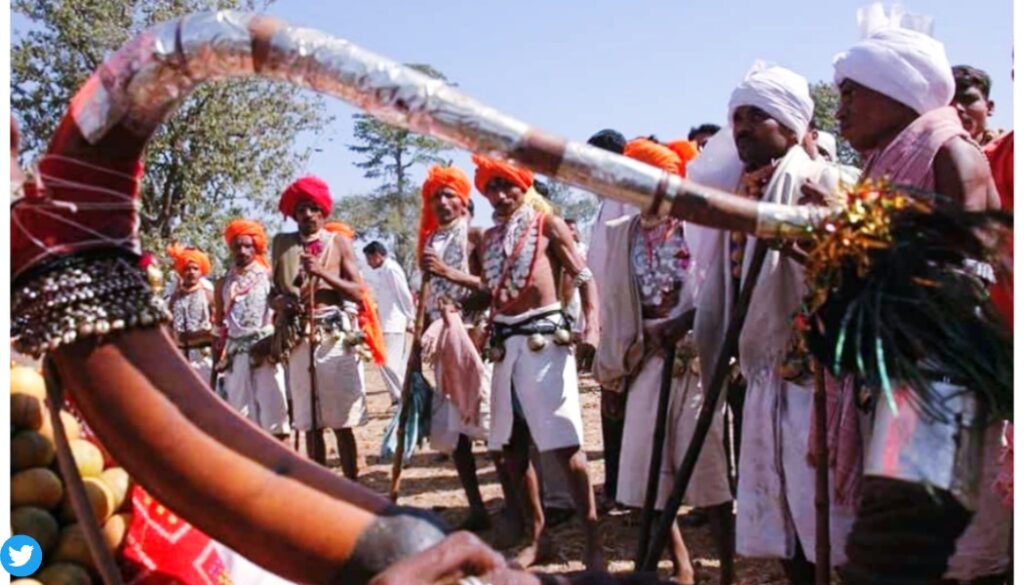
– Don’t Take Advice from Pandits
– Refrain from using Sindoor or wearing mangalsutra.
– Give up all observances and fasts.
– Acknowledge a Different Religion: Their own, not that of Hindus.
– The Proposal for a Novel Bhil Pradesh
“We are not Hindus, We are Tribals”
This movement included the Tribal Family, the largest organization in the Bhil society. This time, Tribal Family institution founder Menka Damor spoke at the gathering, stating, “The women of the tribal community should not follow the instructions of the priests.”
According to Menka Damor, women from tribal families do not wear mangalsutras or apply sindoor. She stressed that education should be the only priority for the tribal population. Menka Damor asked everyone to cease fasting in her address because she did not think of them as Hindus.
Demands:
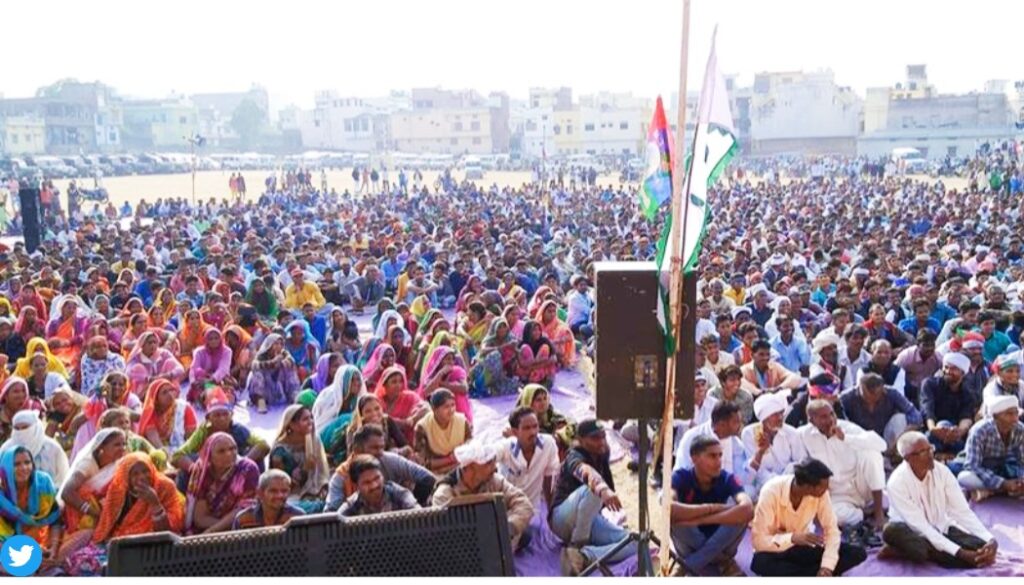
– Bhil Pradesh’s formation: An independent area was established to better govern and attend to the unique demands of the tribal populace.
– Extension of Reservation: Scheduled Tribes are granted more access to political representation, work opportunities, and education.
-Employment possibilities: To stop migration and provide sustainable livelihoods, local employment possibilities should be developed.
-Better Nutrition and Healthcare: To address malnutrition and health challenges, better nutrition programs and healthcare facilities are needed.
– Educational Facilities: To empower young people, better access to high-quality education and career training is needed.
– Preservation of Land Rights: Preserving traditional lands and ways of life against abandonment.
How the Bhil Tribe came to be:
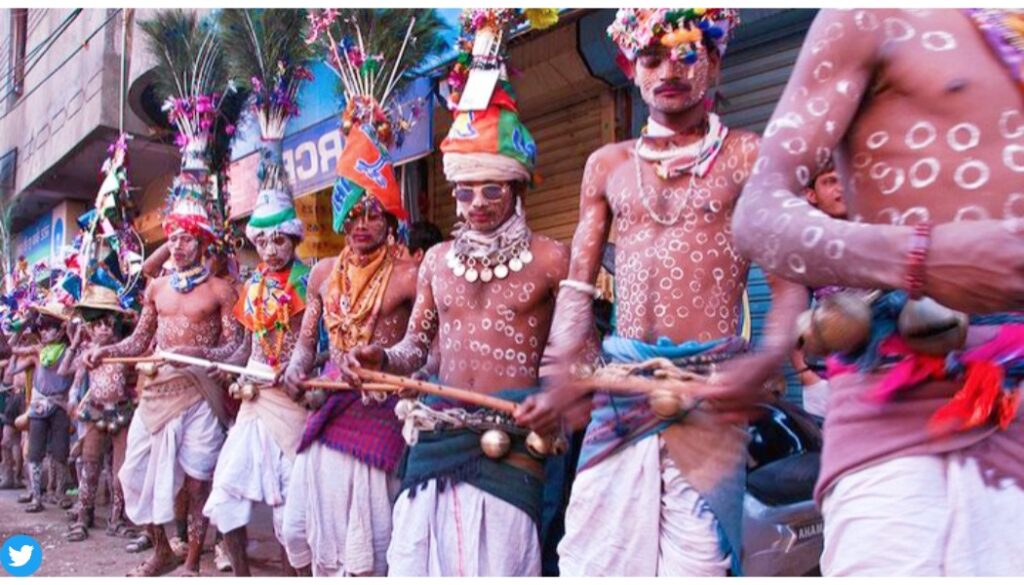
– The word “Bhil” comes from the Dravidian word “Veel,” which means “bow”.
– The Bhil community has earned the moniker “Bowmen of India” due to their extraordinary proficiency with the bow.
– The Bhil people are a tribe of Indians who live all throughout the nation, from Tripura in the far east to Gujarat in the west.
– The majority of them resided in the Indian states of Gujarat, Madhya Pradesh, Rajasthan, and Chhattisgarh, making them the largest tribe as of 2013.
– The culture of the Bhils is distinctive and rich. The Pithora paintings in the Bhilala sub-division are well-known.
– The Bhil tribe’s traditional folk dance is called the ghoomar.
– Ghoomar is a dance that announces a young woman’s passage into womanhood while teaching her the art.
The Bhil Tribe’s Geographical Distribution:
The regions from multiple states where the Bhil population is significant would be included in the planned Bhil Pradesh. These domains consist of:
– Rajasthan: In particular, the Udaipur, Dungarpur, and Banswara districts.
– Madhya Pradesh: Consisting of Jhabua, Alirajpur, and Dhar districts.
– Gujarat: In particular, the Panchmahal and Dahod districts.
– Maharashtra: primarily the Dhule and Nandurbar districts.
Population of Bhil in Four States and Across the Country :
Thirty million indigenous people who live in around 49 districts across Madhya Pradesh, Rajasthan, Gujarat, and Maharashtra support the demand for “Bhil Pradesh”. In Madhya Pradesh, 14.8% in Gujarat, 13.48% in Rajasthan, and 9.35% in Maharashtra, their population percentage is almost 21%. Their number surpasses 110 million in the country.
They are dispersed throughout the Northeast and 25 other states and five union territories. The Bhil tribe and its sub-tribes comprise about 4.4% of the nation’s tribal population. These tribe members are among the poorest and least educated people living in the four states shown above. They are calling for the creation of a distinct Bhil state as a result of their development neglect and backwardness.
Supporting Smaller States
The creation of the states of Chhattisgarh and Jharkhand serves as an illustration of how smaller governments might promote growth, according to Hansraj Meena, the creator of the Tribal Army in Rajasthan. Tribes have gained political clout in several states. They receive a portion of development in addition to political involvement. Despite having 50 states, the USA has a smaller population than India. So why is it that new states cannot be formed here?
Bhil Pradesh: What is it?
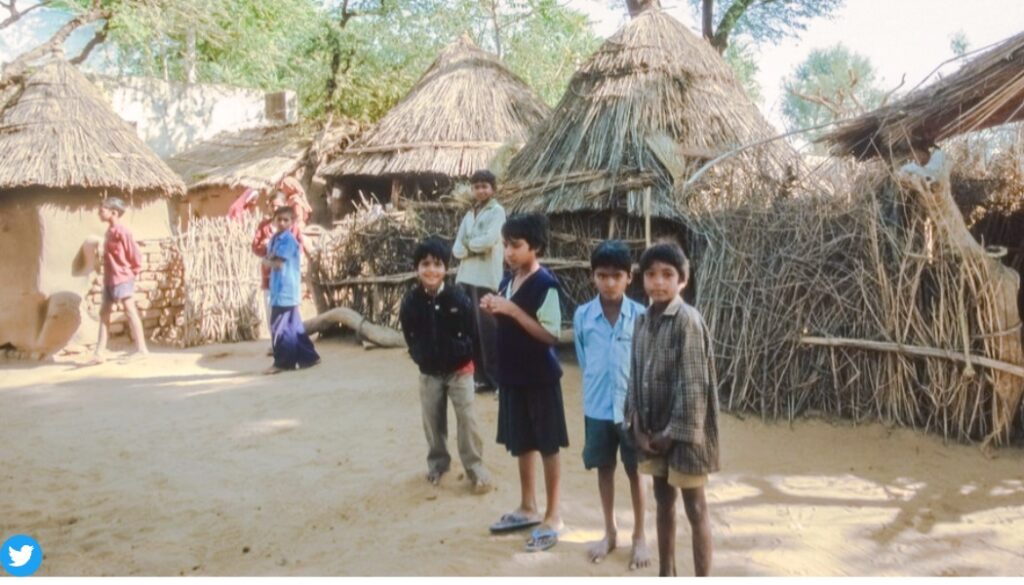
Initially, regional groups like the Indian Tribal Party (BTP) pushed the demand for a distinct tribal state in western India. The primary focus of the Gujarat-based BTP, which was founded in 2017, is this problem. The Bhil community has been pushing for the division of four states into 49 districts to form Bhil Pradesh. The idea for a separate state for tribal people was originally brought forward in 1913 by Bhil social reformer and spiritual leader Govind Guru.
– Persistent Demand: Ever since independence, there has been a constant call for Bhil Pradesh.
– Original Unit Proposal: Prior to independence, portions of Gujarat and Madhya Pradesh, as well as
– Rajasthani regions like Dungarpur, Banswara, and Udaipur, were regarded as a single unit.
– Factors Driving India’s Post-Independence Need for New States:
– The linguistic diversity of Maharashtra and Gujarat dates back to their 1960 establishment.
– Cultural Identity: The West Bengal area of Gorkhaland is demanding statehood.
– Developmental Disparities: The claim that Maharashtra’s Vidarbha area should become its own state.
– Administrative Efficiency: Uttar Pradesh’s demand for Harit Pradesh.
Why Do Tribal People Desire Their Own State?
Tribals make up approximately 14% of Rajasthan’s population, according to the 2011 census, and are mostly found in the Vagad region, which encompasses the districts of Pratapgarh, Banswara, Dungarpur, and portions of Udaipur. Sub-regional economic regression in larger states has also surfaced as a major driver of the desire for smaller states.
Provisions in the Constitution for the Creation of New States:
Article 2: Covers the creation or admittance of new states.
By law, the Parliament has the authority to create new states or accept existing ones into the Union under whatever terms and conditions it deems appropriate.
Article 3: Gives the Parliament the authority to form new states.
– The Parliament may establish new states in a number of methods, including:
– Dividing a region from a state.
– Bring two or more states together.
– Joining disparate states.
– Including any region as a component of a state.
– The Parliament may change a state’s name, boundaries, or area under Article 3 of the Constitution.
– This procedure is known as state rearrangement.
– Reorganization may be based on administrative, linguistic, religious, or ethnic grounds.
Procedure for Introducing a New State Bill:
– Only on the President’s proposal may a measure proposing the creation of additional states be filed in either house of parliament.
– The President must transmit a law that includes provisions pertaining to state names or boundaries to the legislature of the state in question so that it can voice its opinions in Parliament.
What is the demand’s current state?
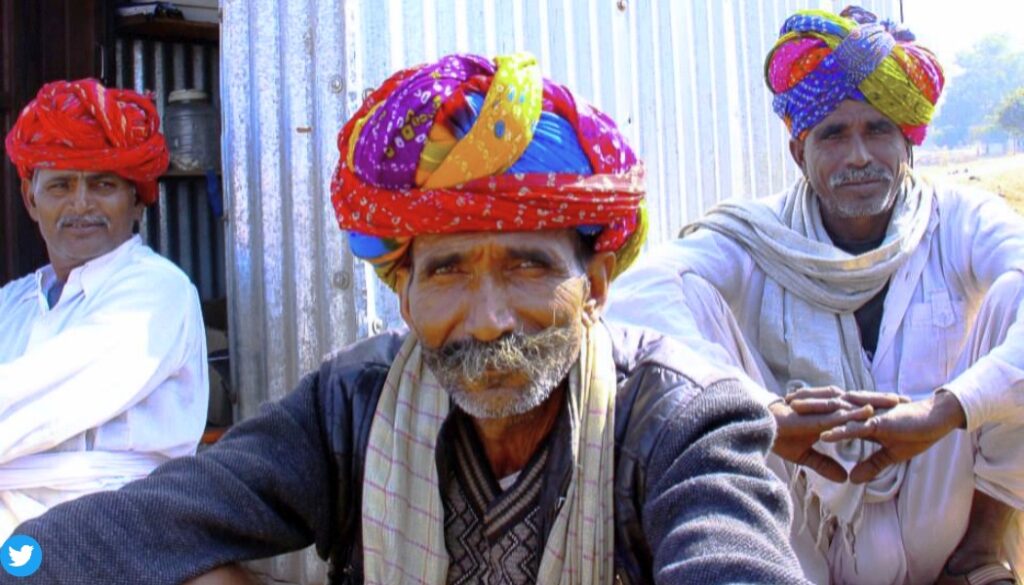
Disagreements among BTP leaders led to the formation of the Bharatiya Adivasi Party (BAP) in 2023, a few months before Rajasthan’s assembly elections. The majority of state officials and BTP employees joined the new group, which garnered strong support from the electorate.
The BAP currently has three MLAs and one MP in Rajasthan; it is ideologically identical to the erstwhile BTP, which had only two MLAs. In addition, BAP leaders have emphasized their unique tribal culture and rejected the influence of the Rashtriya Swayamsevak Sangh (RSS) and Hinduism.
“We have our own traditional laws,” Rajkumar Roat said in an interview with the Indian Express. Tribals are people of indigenous faiths; we are not Hindus, as the Supreme Court has stated in some of its rulings.”
Tribal activist Menka Damor emphasized during a recent rally at Mangarh Dham that tribal people are not Hindus and advised tribal women not to wear sindoor or mangalsutra. It is unclear how the demand for Bhil Pradesh would develop going forward given the emergence of the BAP. In the future, tribal problems may be brought up more frequently in the state.
Congress’s Backing of Bhil Pradesh:
The Congress has endorsed the Bharatiya Adivasi Party’s proposal for Bhil Pradesh. Arjun Singh Bamaniya, a former TAD Minister and leader of the Congress, said that the demand for a separate Bhil Pradesh is legitimate and ought to be granted. That is, however, up to the central government’s judgment. He added that this demand has also been supported by Congress. Seeing how the present huge rally affects the demand for Bhil Pradesh would be intriguing to watch.
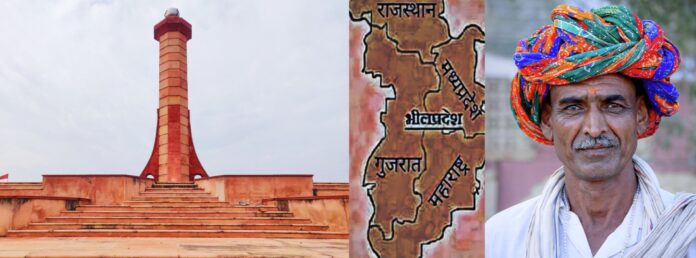



Very interesting content